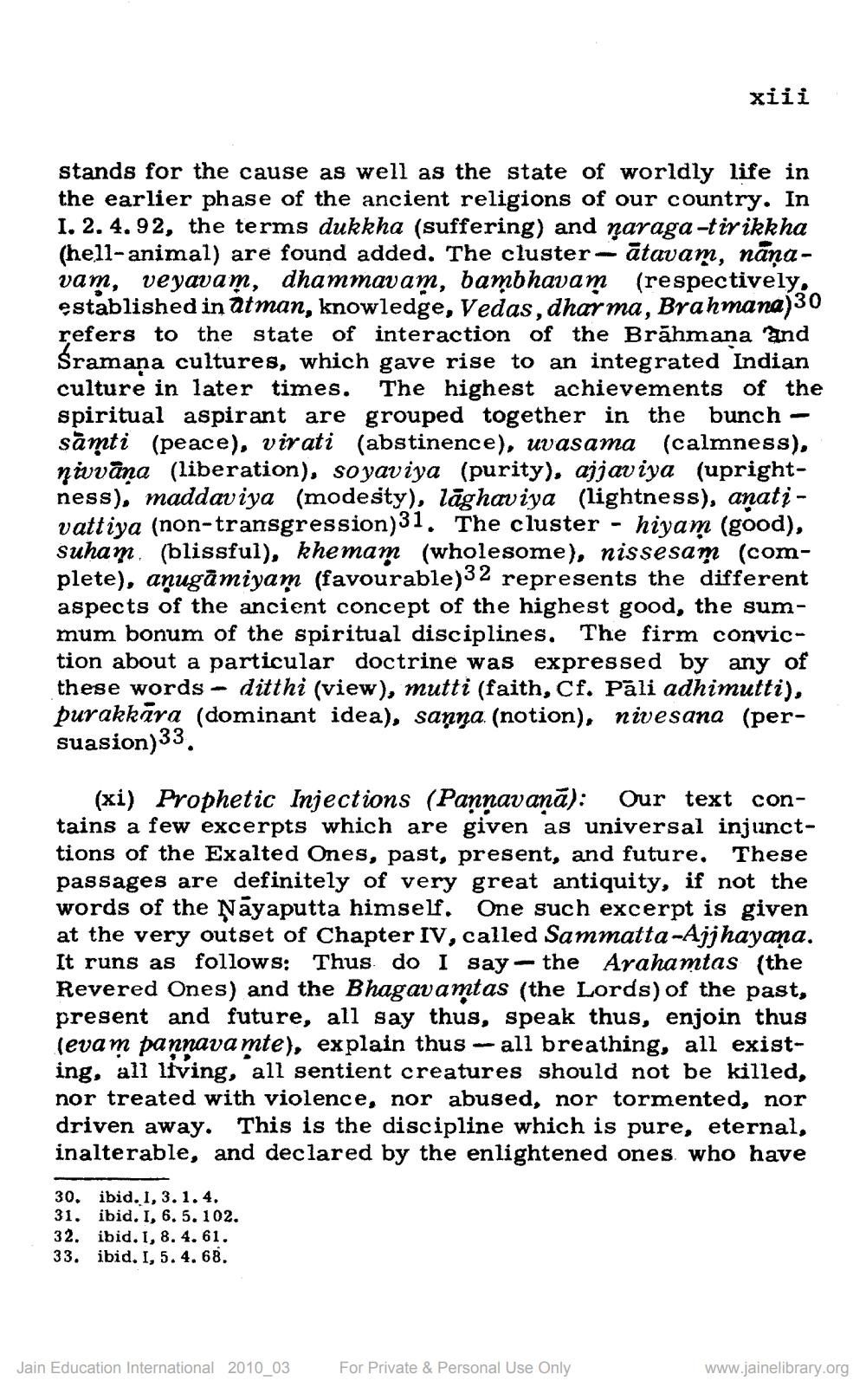________________
xiii
stands for the cause as well as the state of worldly life in the earlier phase of the ancient religions of our country. In 1. 2. 4.92, the terms dukkha (suffering) and naraga-tir ikkha (hell-animal) are found added. The cluster- ātavam, nāņavam, veyavam, dhammavam, bambhavam (respectively, established in atman, knowledge, Vedas, dhar ma, Brahmana)30 refers to the state of interaction of the Brāhmana and Śramana cultures, which gave rise to an integrated Indian culture in later times. The highest achievements of the spiritual aspirant are grouped together in the bunch - samti (peace), virati (abstinence), uvasama (calmness), nivvāna (liberation), soyaviya (purity), ajjaviya (uprightness), maddaviya (modesty), lāghaviya (lightness), anati - vattiya (non-transgression)31. The cluster - hiyam (good), Suham (blissful), khemam (wholesome), nissesam (complete), anugāmiyam (favourable)32 represents the different aspects of the ancient concept of the highest good, the summum bonum of the spiritual disciplines. The firm conviction about a particular doctrine was expressed by any of these words - ditthi (view), mutti (faith, Cf. Pali adhimutti), purakkara (dominant idea), sanna. (notion), nivesana (persuasion)33.
(xi) Prophetic Injections (Pannavanā): Our text contains a few excerpts which are given as universal injuncttions of the Exalted Ones, past, present, and future. These passages are definitely of very great antiquity, if not the words of the Nayaputta himself. One such excerpt is given at the very outset of Chapter IV, called Sammatta-Ajj hayana. It runs as follows: Thus do I say the Arahamtas (the Revered Ones) and the Bhagavamtas (the Lords) of the past, present and future, all say thus, speak thus, enjoin thus (evam pannava mte), explain thus - all breathing, all existing, all living, all sentient creatures should not be killed, nor treated with violence, nor abused, nor tormented, nor driven away. This is the discipline which is pure, eternal, inalterable, and declared by the enlightened ones who have
30. ibid. I, 3.1.4. 31. ibid. I, 6. 5. 102. 32. ibid. 1, 8. 4. 61. 33. ibid. I, 5.4.68.
Jain Education International 2010_03
For Private & Personal Use Only
www.jainelibrary.org




